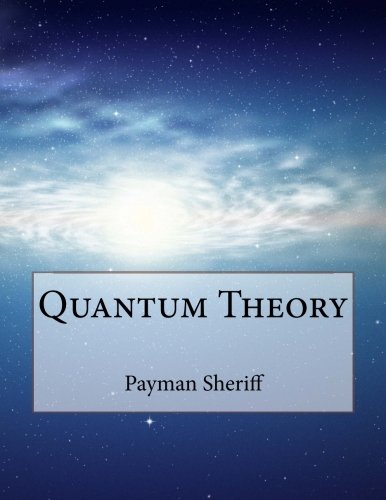Artículos relacionados a Quantum Theory

Reseña del editor:
The Equation of Motion Spatial motion of free quantum particles is described by the Schrödinger wave equation. Typical solutions of this equation show an unlimited growth of the wave packet width. If the particle is illuminated then the scattered light will show the trajectory of the quantum particle. If a single photon of incoming wave number has scattered with the final wave number then the scatterer's wave function obtains a unitary factor. where the scattering angle between incoming wave number and the final wave number, respectively, is distributed according to the modulus square of the scattering amplitude. These processes interrupt the otherwise deterministic evolution of the wave function. We shall assume a certain diffuse light of different wave number. Then the scattering processes will occur randomly at a given rate. To get an easy insight into the resulting stochastic process, we shall assume that the wave length is much bigger than the wave packet width and, furthermore, that the repetition frequency of scatterings is big as compared to the time scale of the free dynamics of the particle. What follows will describe the dynamics of the illuminated particle. The particle's motion is influenced by the random force which is a certain stationary white noise. Hence, the linear stochastic might not be suitable to represent the experienced trajectory of the quantum particle. The jumps of the wave function assumes a particular classification of the photon states. Indeed, the final states as well as the initial ones have been classified according to their momenta. Obviously, trajectories can not be observed via the scattering angles of the photons. They are only observed by identifying the position where the scattered light has emerged. One might think of a lense inserted on the path of each scattered photon, making an optical map of the scatterer particle. Here we introduce the mathematical model of the above set up by the special Fourier transform of the scattering amplitude to present the influence of a single scattering process on the particle's wave function. This jump differs very much from the previous one in a sense that is non-linear; In the same approximation that we assumed for the previous process, this nonlinear one leads to the following counterpart of a henomenological equation. To make a formal comparison of this last procedure to the ordinary Schrödinger, The main difference would be the lack of the imaginary factor in the second term as if the random force had become pure imaginary. The third term then comes in just to restore normalization of the wave function. By allowing only one electron to get excited out of the ground state configuration, we might be able to strongly reduce the complexity of solving the Eqation of motion. A suitable way to achieve this goal is by exploiting the configuration interaction language and describing the N-Body wave function in terms of the Hartree-Fock ground state. The Hamiltonian operator is the residual electron-electron interaction, that go beyond the mean-field potential. The vector and dual vector with respect to the symmetric inner product required because of the non-hermiticity of Hamiltonian operator. The dipole interaction between singly-excited configurations reduces to transitions between states of the excited electron and transitions between ionic states. From the full N-Body wave function one can construct the ion density matrix by tracing over the excited electron. A CAP is placed far away from the atom such that an electron so far out does not affect the ion, esp. the ionic states. Therefore, the absorption of an electron by the CAP results only in an artificial loss of norm Spin-Orbit Splitting In order to include the effect of spin-orbit splitting in the occupied orbitals we account for spin-orbit splitting with degenerate-state perturbation theory within the (n,l) orbital manifold. Notes: Dr Lajos Diosi
"Sobre este título" puede pertenecer a otra edición de este libro.
- EditorialCreateSpace Independent Publishing Platform
- Año de publicación2015
- ISBN 10 1514805561
- ISBN 13 9781514805565
- EncuadernaciónTapa blanda
- Número de páginas128
- Valoración
(Ningún ejemplar disponible)
Buscar: Crear una peticiónSi conoce el autor y el título del libro pero no lo encuentra en IberLibro, nosotros podemos buscarlo por usted e informarle por e-mail en cuanto el libro esté disponible en nuestras páginas web.
Crear una petición
